The Witch is a classic example of a “What if…” movie except instead of pulling a Pixar and pondering what it would be like if toys came to life or if the dinosaurs never went extinct it looks back at 1600s New England and asks, “What if the Puritans were right? What if witches really did exist?”
It’s a compelling hook to hang a film on. Heck, it works as a TV show as well since WGN is currently two seasons into Salem, a deeply feminist, dark horror fantasy series which re-imagines the Salem Witch Trials from the witches’ point of view. In a clever twist, the real witches are shown to be the secret orchestrators of the Trials, manipulating the Puritans into executing innocent people as part of an ancient blood ritual meant to unleash hell on Earth.
The Witch takes a completely different approach. Set in 1630s New Hampshire, around 60 years before the Trials, it follows a Puritanical family cast out of its plantation over an unspecified theological disagreement and forced to make a new life for itself on the edge of the spooky wilderness. Things don’t go well.
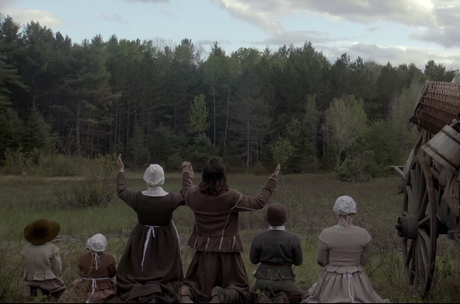
Let us give thanks to the Lord for placing us near the woods where nothing bad will ever happen. Amen.
As we discover in the second scene of the film, literal evil lurks in the woods, its presence usually announced by a remarkably haunting and overbearing musical score drowning out the audio ala Kubrick’s The Shining. If you play a game of peek-a-boo with a baby near the edge of the woods, that baby will be snatched from you with supernatural speed. If you venture into the woods, well, spoiler alert, you’ll be seduced by a witch offering an apple, or you’ll come across a mysterious hare which you can’t seem to shoot for some reason.
This is essentially a fairy tale version of a witch given a disturbingly realistic depiction, reminding us that Puritans genuinely believed witches stole babies and used their blood to lube up their broomsticks. As Witch‘s first time writer-director Robert Eggers told BirthMoviesDeath, “When I started doing the research and started reading the first-hand accounts, I realized that the real world and the fairy tale world were the exact same thing in that period. When someone was calling you a witch they really believed you were an archetypal, fairy tale ogress capable of doing all the things that happen in my film. That was actually what they were accusing you of, it’s what they believed.”
The point of the story, then, is to show us exactly how the Puritans looked, lived and behaved, down to the smallest detail, so that we can understand how truly horrifying it would be if their superstitions about witches were accurate.

Farm living is the life for me. Land spreading out, so far and wide. Watch out for that Witch, though.
Initially, this feels a bit like a cinematic version of a visit to one of those living museums where actors dress, act and talk like people of a specific era, going about their business in a recreated cowtown, Renaissance faire or tiny Puritan village. In this case, “Oh, look. That’s how they harvested corn back then. That’s how little kids played. That’s how the division of labor placed such a burden on the oldest kids in the family. That’s how they talked.” Indeed, the old English dialogue, with all of its “thou”s and “thy”s, recalls high school readings of The Scarlet Letter and Crucible.
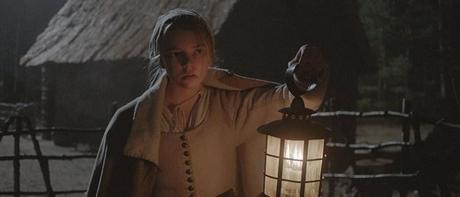
As things continue to go south for the poor family, the horror stems not from the actions of the titular witch, which are only ever glimpsed in shadow, but in the horrified reactions from the family, who respond to each new slight with pious stubbornness and prayer before giving in to extreme acrimony and paranoia. Along the way, the father’s hypocrisy is revealed, the mother begins to lose her faith and Thomasin clings to her sanity like a life preserver.
This all progresses on a slow burn, playing out like a series of increasingly intense chapters, each one ending on a startling moment before abruptly cutting to black and starting the next chapter. As Eggers told BMD, “I just tried to end every scene with a sense of ‘Oh no!’ And that meant each ‘Oh no!’ had to top the last one.” It’s effectively jarring, if a bit frustrating since every time it feels like something has finally happened we cut to black.
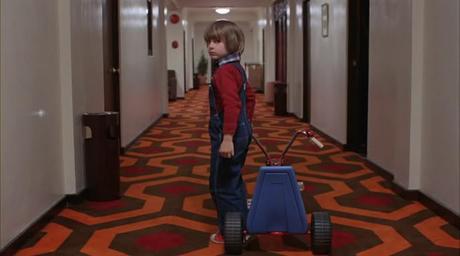
I know The Witch is a masterfully made movie. The cinematography is stunning, using mostly natural light the same way Emmanuel Lubezki did for The Revenant. The shot composition is often inspired, with a limited, but effective use of fourth-wall breaking shots where characters appear to stare straight into the camera, usually as they are looking to the heavens in search of religious salvation. The performances are all compelling, with particular praise for the way the younger actors made the old English dialog sound so natural. Unfortunately, the whole thing has been mismarketed, and it will suffer from the hype just like It Follows and The Babadook. However, this is still an undeniably good movie.
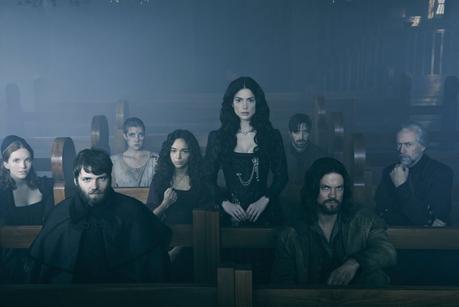
It’s delightfully over-the-top, consistently bending its own historically accuracy even though most of its characters are based on historical figures. If they want to reduce one of the era’s legendary witch hunters into a severed head magically re-animated and controlled by the primary witch then they’re not going to let a silly little thing like “That obviously never actually happened” stop them. That is but one of many over-the-top visuals in a show which manages to consistently toe the line of camp without diluting its central message.
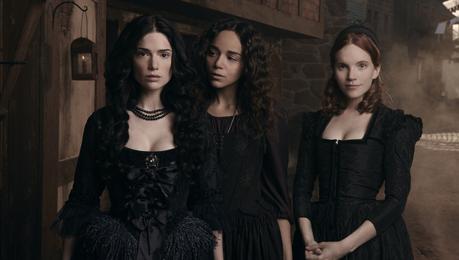
As the AVClub argued, “Salem isn’t an accurate depiction of the historical Salem witch trials, nor is it trying to be. What it is, however, is a fantastical story about persecution and corruption. It is a story of the evils that men and women do and why.” The Witch, on the other hand, has made historical accuracy its calling card, literally putting up a card immediately after the final image of the movie to explain that everything we just saw was completely accurate to the New England folk tales of the era. It’s not based on a true story, but instead on the actual supernatural beliefs of the era. It uses those beliefs to tell a story about a people who were “stifled, confined, lonely, and utterly without hope.”
Again, it’s not at all fair for me to compare the two, but I walked away from The Witch wondering if everyone who loves it realizes that many of the same general messages about religious piety and female oppression have been delivered for two seasons now in a far more progressive fashion on Salem.
Life was hard back then, especially for women. Puritans were hypocritical bastards. Actual witchcraft would have completely rocked their obnoxiously pious minds. That’s great. Thanks for telling us that, Witch, and thanks for introducing us to Anya Taylor-Joy. I’d rather go back to watching Salem, though.
RottenTomatoes Consensus
88% – “As thought-provoking as it is visually compelling, The Witch delivers a deeply unsettling exercise in slow-building horror that suggests great things for debuting writer-director Robert Eggers.”

